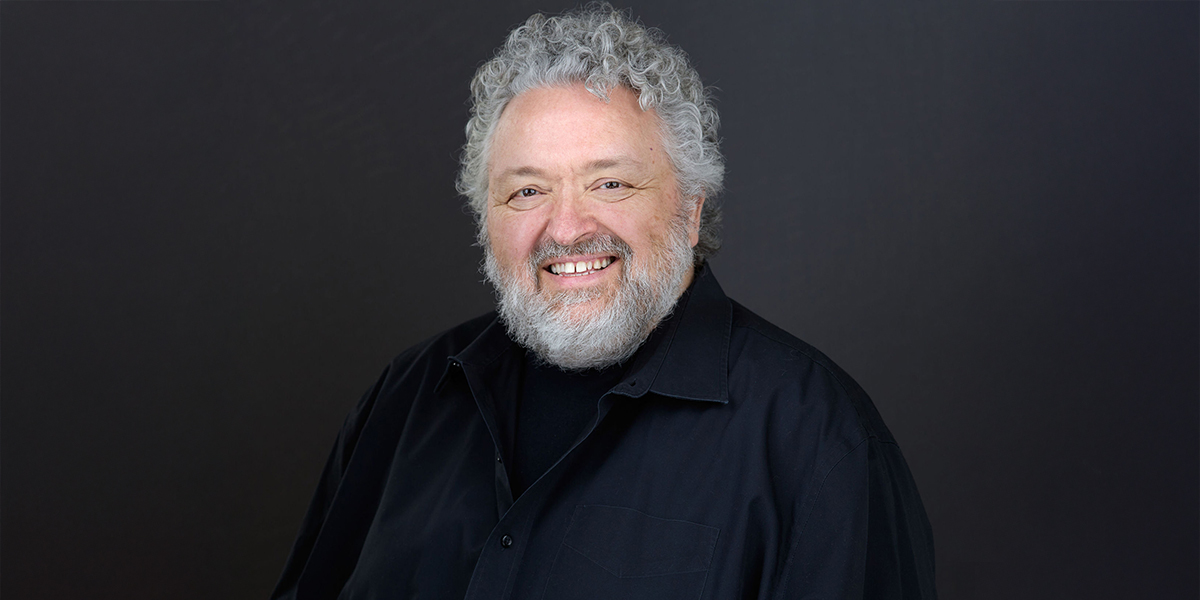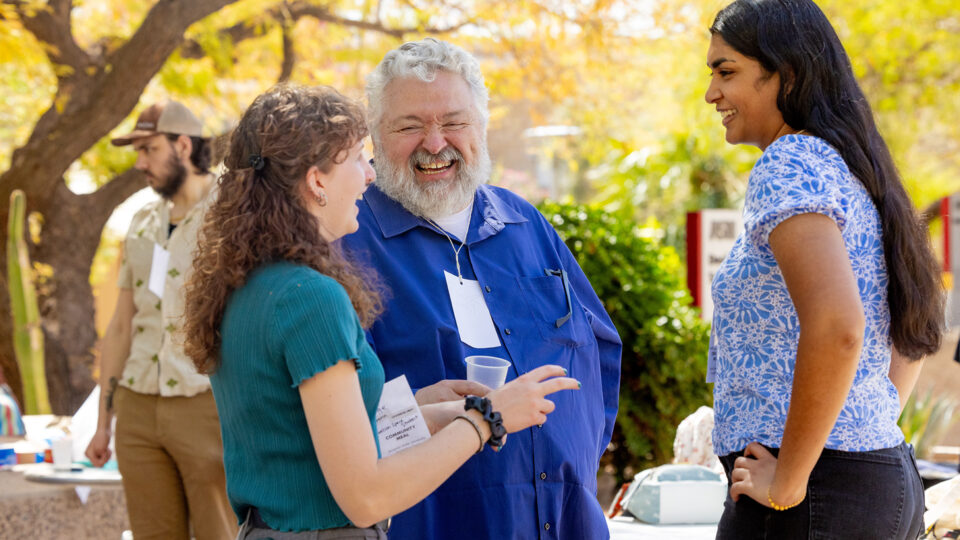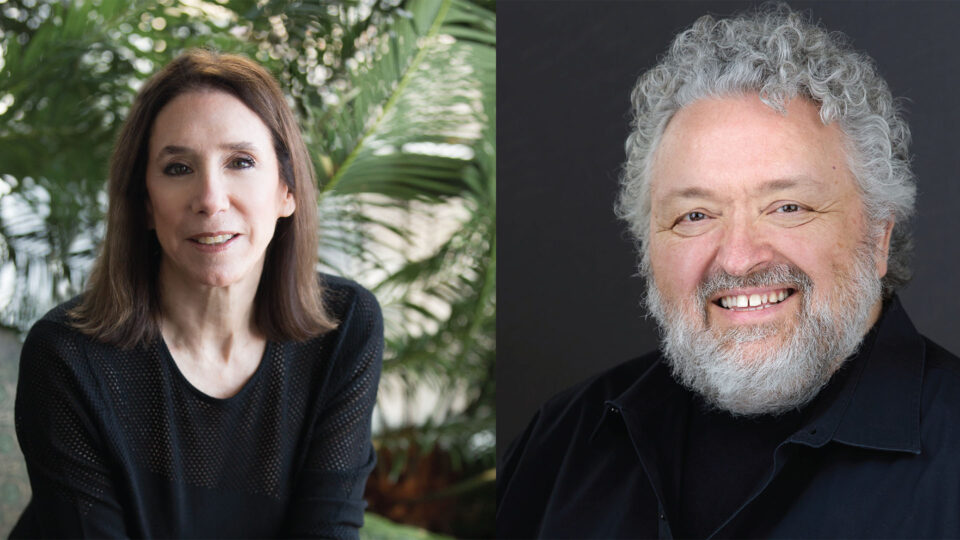Bruce Mau 2023 SEGD Fellow

Renowned designer, visionary, educator, author, and artist Bruce Mau has vastly expanded the notion of design and its potential to solve the world’s most wicked problems. Driven to address the compounding crises of our time, in his forty years as a design innovator, Bruce has transformed the field into an approachable systems-based method of empowerment — life-centered design — for the betterment of all living things.
Bruce is the Co-Founder and Chief Executive Officer of Massive Change Network (MCN), a global design consultancy in the Chicago Area which deeply collaborates with leading brands and companies, cultural organizations and heads of state to contextualize their worlds, take action and accelerate positive change. To do this work, Bruce evolved the 24 Massive Change Design Principles — MC24 — which can be applied in any field or environment at every scale. The MC24 Design Principles underpin all of Bruce’s work, from designing carpets to cities, books to immersive exhibits, social movements to brand identities, and fonts to strategic frameworks.
Books are central to Bruce’s purpose in communicating and inspiring completely new ways of thinking and living. He has contributed to the development and design of more than 250 books in total. In 1985, Bruce designed Zone Books’ groundbreaking inaugural double issue, “ZONE 1 | 2: The Contemporary City,” and he continued to serve as Zone Books’ design director for the next two decades. In 1995, Bruce collaborated with Rem Koolhaas to conceive the landmark architecture book, “S,M,L,XL.” As an author himself, Bruce’s books grapple with our increasingly complex and changing world, while contributing proven design principles for actualizing optimistic outcomes. Some of Bruce’s texts include: “MASSIVE CHANGE;” “MC24: Bruce Mau’s 24 Principles for Designing Massive Change in Your Life and Work;” and “THE NEXUS: Augmented Thinking for a Complex World — The New Convergence of Art, Technology, and Science” with author Julio M. Ottino.
Designing a path forward for the next generation, in 2022, Bruce and MCN Co-Founder Aiyemobisi “Bisi” Williams launched MASSIVE ACTION, a new global initiative to inspire and empower 100 million designers with the mindset and tools of life-centered design. Launched in Sydney at the University of New South Wales Arts, Design & Architecture, MASSIVE ACTION demonstrates the possibility of design to confront and overcome our most urgent challenges. Building an ecosystem of actionist friends and institutional partners, MASSIVE ACTION is currently ramping up for its next level of engagement.
Bruce’s work and life story are the subject of the feature-length documentary “MAU,” which premiered at SXSW in 2021 and continues to bring design into the cultural spotlight.

Photo courtesy of Bruce Mau

Photo courtesy of Bruce Mau
In the film “MAU,” you mentioned being a geeky kid from Sudbury. Can you share a bit about your childhood and what inspired you to pursue a career in design?
I grew up on a farm outside a mining town in northern Canada, about five or six hours north of Toronto. My first trip to the city was for my college interview, which blew my mind. I had a farm life, and our house didn’t have running water in the winter. I had to bring water to the house every day from the well in the valley using my snowmobile. It was an extreme environment with long winter months and temperatures as low as minus 40 for weeks on end. Design wasn’t really a part of my life until I started the college application process and met a man named Jack Smith.
What impact did Jack Smith have on your journey?
Jack Smith ran a program called Special Art, and he allowed me to join his program despite my lack of art classes and portfolio. I needed to build a portfolio for college applications, and he created a place where I could explore anything my mind directed. I fell in love with art and gave up everything else , much to the dismay of my family- except the water, of course. Despite the challenges, I managed to get into art school, which had an equally mind-blowing effect. But as I progressed, I did not do well in school. I discovered I was in art School, not Art school, and I just could not fit into their matrix. So I left and got a job as a designer.
Your design style is a synthesis of British and Swiss traditions. Can you elaborate on how these influences shaped your work?
My family background, with Dutch, German, and Polish roots, played a role in shaping my design sensibility. I admire the storytelling, humor, and humane quality of British design, exemplified by my time at Pentagram, London. At the same time, I am drawn to the Bauhaus and Swiss design traditions for their precision and clarity. Combining these elements naturally shaped my unique approach.
At what point did you realize your role as a designer could also be a changemaker? Was there a defining moment or a call to action?
While in London, I desired my work to have a greater purpose. Dedicated to making the world a better place, I decided to go out on my own. That’s when I and two partners founded Public Good, a design company committed to advancing positive causes. Although it was challenging at times, this path felt right for me. The design community’s reaction was mixed , but having a clear mission under the name Public Good, helped us stay focused on our purpose.

Photo courtesy of Bruce Mau

Photo courtesy of Bruce Mau
Can you give an example of some projects where you felt your design had a significant impact on the world?
One significant project was with the Nurses Union. We campaigned to change public perception and give the Nurses Union the recognition they deserved. It was a game-changer for them and improved their position within the medical system. Throughout my career, I’ve been fortunate to work with amazing, generous, and brilliant people. It’s been an incredible journey as a designer.
You mentioned “Life-Centered Design.” Can you explain its essence and how it differs from human-centered design?
Life-Centered Design expands the design brief to prioritize all of life, not just humans. The goal is a happy life, not just a happy human. We need to consider the context in which humans exist, including their family, community and ecology. Solving problems out of context can lead to damaging consequences, such as species loss and environmental disasters. We need to think differently about the brief and avoid compressing it. Instead, we should embrace a broader perspective to create a positive impact.
Your commitment to purposeful design is commendable. Any advice for young designers entering the field in today’s critical times?
I encourage young designers to recognize the opportunity they have at this pivotal moment in history. Embrace purpose-driven design that contributes positively. That’s where designers will win the day. We have the ability to do that. SEGD members can do that.
It’s been a joy learning about your design journey. You mention you’re not an “organization” fan. Can you share why you make an exception for SEGD?
SEGD has been a part of my work since the early days. Although I’m not a big organization guy, I made an exception for SEGD. You do an excellent job of providing for your members, helping them understand changes and opportunities, and connecting them.
People also viewed
-
Everything Is Experience Design: Bruce Mau Opens SEGD’s Voices of Experience Series

Everything Is Experience Design: Bruce Mau Opens SEGD’s Voices of Experience Series
-
The 2023 SEGD CLASS OF FELLOWS

The 2023 SEGD CLASS OF FELLOWS
-
2023 SEGD Achievement Awards Recap

2023 SEGD Achievement Awards Recap